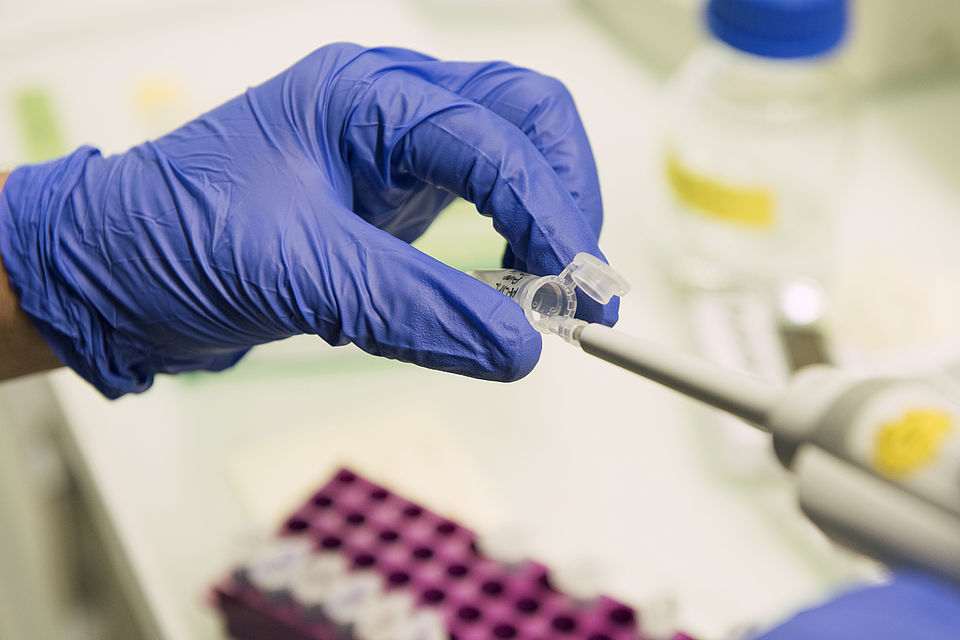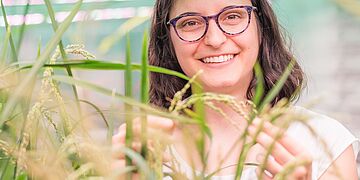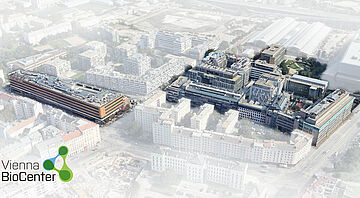RT-LAMP: a simple detection strategy

Starting in spring 2020, scientists from the Vienna BioCenter developed an innovative way to detect SARS-CoV-2 by rather simple means: RT-LAMP tests are cheaper than PCR testing and achieve results with comparable sensitivity and specificity. The protocols, some of them using exclusively open source materials, were provided free of charge to help with monitoring in environments with limited means.
RT-LAMP is a fast, simple and inexpensive technique to multiply DNA, making it a potential SARS-CoV-2 detection alternative to the "gold standard" PCR. RT-LAMP or "reverse transcription loop-mediated isothermal amplification" is routinely used to detect viruses and other pathogens, but used to be far less reliable in sensitivity and robustness when compared to the classical PCR test. Scientists from the Vienna BioCenter adapted LAMP-protocols to increase both sensitivity and robustness while retaining ease of handling and accessibility.
To achieve this goal required dedication, experience, collaboration – and a bit of luck. Group Leaders Julius Brennecke (IMBA) and Andrea Pauli (IMP) were investigating alternative testing methods based on CRISPR-enzymes when a general lockdown forced Max Kellner, a PhD-student at the LMB, to leave Cambridge and return to his hometown Vienna. Max, who has ample experience in isothermal amplification methods and previously worked with Feng Zhang at the MIT, joined the Vienna BioCenter team in March 2020 and contributed substantially to the development of RT-LAMP.
Together with students Jakob Schnabl and Julian Ross, and starting with enzymes obtained from the Zhang lab, the team gradually simplified the method, eventually eliminating the need for the CRISPR-step altogether. Using two freely available enzymes and including a few simple tricks such as bead-enrichment, they achieved a unique combination of simplicity and sensitivity in a method that is utterly robust and entirely open-access.
In a classic PCR test, viral genetic material is first transcribed into DNA and then duplicated numerous times. A rather expensive device is required for the entire process and to visualize the duplication of the DNA. With the RT-LAMP method, however, an incubator or a simple water bath with a constant temperature of 63 degrees Celsius is sufficient. After thirty minutes, a positive result is recognizable even by laypersons via a simple color change in the sample.
The simplicity of RT-LAMP makes it especially attractive for areas with a disadvantaged infrastructure, such as developing countries, companies without lab, or medical facilties that lack PCR machines. Another bonus, especially in places with supply-chain issues, is that all the reagents required can be easily obtained and are not subject to patents.
To further propagate awareness for the technique and help people get started, the website www.rtlamp.org was created and starter kits were disseminated at the purchase price via the Vienna BioCenter Core Facilities. The demand for assistance and information grew rapidly and the team was expanded to include Martin Matl and Dominik Handler. To help refine the technique further and disseminate it, the charitable Mila Foundation supported the initiative. By spring 2021, several companies and institutions had taken up the technique and applied it independently, for example to routinely monitor staff members for SARS-CoV-2.
To furhter propagate awareness for the technique and help people get started, the website www.rtlamp.org was created and starter kits were disseminated at the purchase price via the Vienna BioCenter Core Facilities. To help refine the technique furhter and disseminate it, the charitable Mila Foundation supported the initiative. By spring 2021, several companies and institutions had taken up the technique and applied it independently, for example to routinely monitor staff members for SARS-CoV-2.
Further Reading
Instructions, explanatory videos, kits: www.rtlamp.org
News Item, 24 June 2020: Researchers develop a "quick and easy" Covid-19 test for population screening with simple means
News Item, 20 October 2020: PCR alternative: RT-LAMP, a new SARS-CoV-2 test "Made in Vienna"
Preprint: "Scalable, rapid and highly sensitive isothermal detection of SARS-CoV-2 for laboratory and home testing". Kellner, M. J., et al., doi: doi.org/10.1101/2020.06.23.166397




